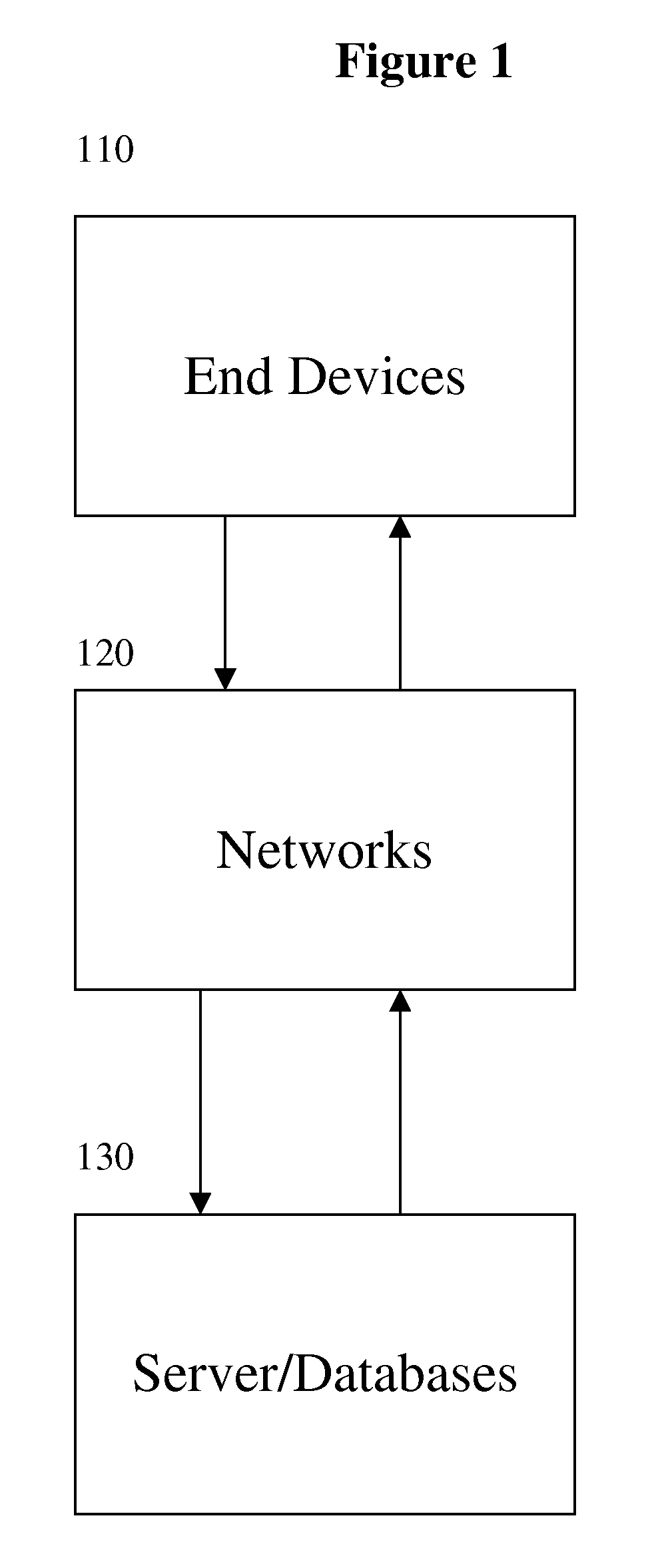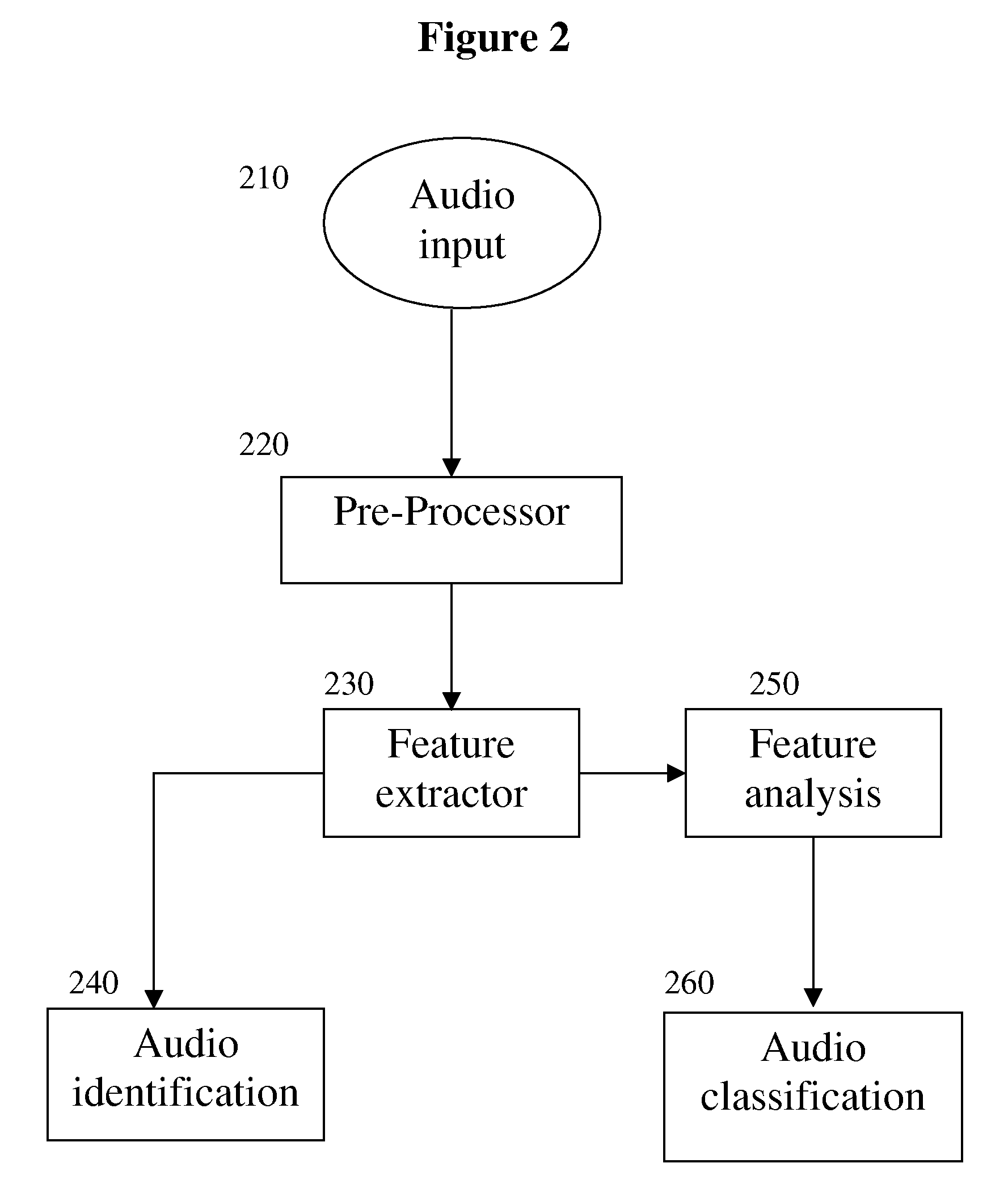Feature extraction for identification and classification of audio signals
a technology for audio signals and features, applied in the field of feature extraction for identification and classification of audio signals, to achieve the effects of improving the accuracy of derived fingerprints, good representation of audio, and eliminating the effect of different playback speeds
- Summary
- Abstract
- Description
- Claims
- Application Information
AI Technical Summary
Benefits of technology
Problems solved by technology
Method used
Image
Examples
Embodiment Construction
[0021]Overview
[0022]Embodiments of the present invention enables efficient and robust feature extraction from audio signals, which can be used to identify and classify audio signals. FIG. 1 is an exemplary environment to illustrate the application of the present invention. End devices 110 are connected with a server or a sever databases via a network. The audio signal can reside in or be generated from the end devices, which in turn transmit the signal to the server. The server performs the feature extraction, identify the audio against the database and then returns back the identification information to the end devices. If it is required, the server can also classifies the audio and updates the entry in the database. The end devices can be a computer, a mobile phone, a TV, a DVD player or any electronic device. The network can be any inter-connection such as Internet, radio link, wired or wireless. The server can be a computer with database or without. The present invention can als...
PUM
 Login to View More
Login to View More Abstract
Description
Claims
Application Information
 Login to View More
Login to View More - R&D
- Intellectual Property
- Life Sciences
- Materials
- Tech Scout
- Unparalleled Data Quality
- Higher Quality Content
- 60% Fewer Hallucinations
Browse by: Latest US Patents, China's latest patents, Technical Efficacy Thesaurus, Application Domain, Technology Topic, Popular Technical Reports.
© 2025 PatSnap. All rights reserved.Legal|Privacy policy|Modern Slavery Act Transparency Statement|Sitemap|About US| Contact US: help@patsnap.com



